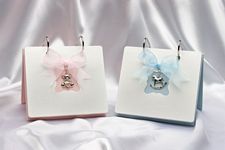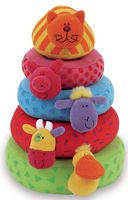
Making Your Baby’s Christmas a Special Memory
It’s November already. There is a new baby in your life now. You may be thinking to yourself, “Christmas is just around the corner. What am I going to do to make this Christmas a special memory for the new baby in my life?” You may be a new mommy, daddy, grandparent, uncle, aunt, godparent, brother, sister, friend of the family or a caring relative. In either case choosing the right gift for a new baby may present a challenge. Today the baby in your life may be too young to know the difference between Christmas and any other day. But, your baby will soon grow up, and for the rest of his/her life get satisfaction and pleasure from his or her first well chosen Christmas memorabilia.
To address this same concern, I recently shared the following list of ten ways to ensure pleasant memories are made for your baby with another audience. I hope you will find it helpful also:
- Personalized Items -- Have an engraver, embroiderer or artist place your personal reminder on the item of your choice. Some possibilities are: Piggy banks, clocks, blankets, furniture, toys, cups and almost any other item.
- Consider a stuffed animals – They make great companions, especially for a baby without playmates at home, and may be kept for years.
- Make a home video – Start a film library for your baby.
- Select a great book - Your baby will soon know it is his/her personal property. You will most likely be getting one later anyway to give him/her an early start at reading.
- Make pictures – Start a photo album for your baby.
- Have a family Portrait painted – Allow your baby to see herself as a part of the family.
- Start a personal Christmas collection for your baby – These may be items your baby will identify as his/hers and when big enough use to help decorate the home for Christmas.
- Choose baby clothing with words to show it is your baby's first Christmas.
- Get a jogging stroller –What we do with our baby is often more memorable that what we give to them. A good baby jogger allows your baby to participate in mommy and/or daddy’s jogging or walking exercises and will be a cherished memory. This is normally for babies six-months old and older and may be used until they weigh about 40 pounds.
- Choose a Bike Trailer – Same as number 9 above.
Memorabilia can become special treasures that your baby may keep to adulthood and pass on to his/her own children or younger siblings. Therefore durability and quality should be considerations when making choices for your baby’s special Christmas. The cheap gift may not survive long enough to create a lasting memory.
These are just a few ideas to get you started thinking of ways to make this Christmas an extra special memory for the new baby in your life. For more ideas visit http://www.babystoregiftshop.com/.




